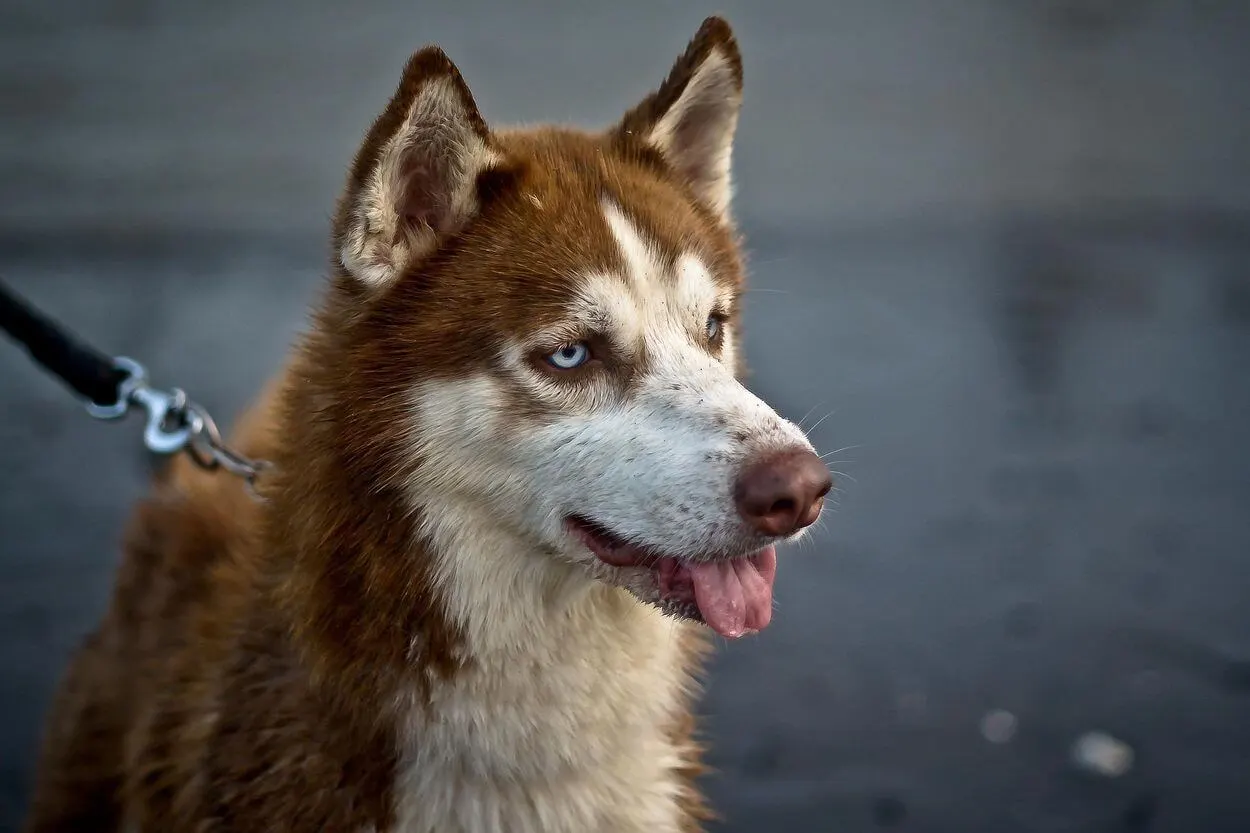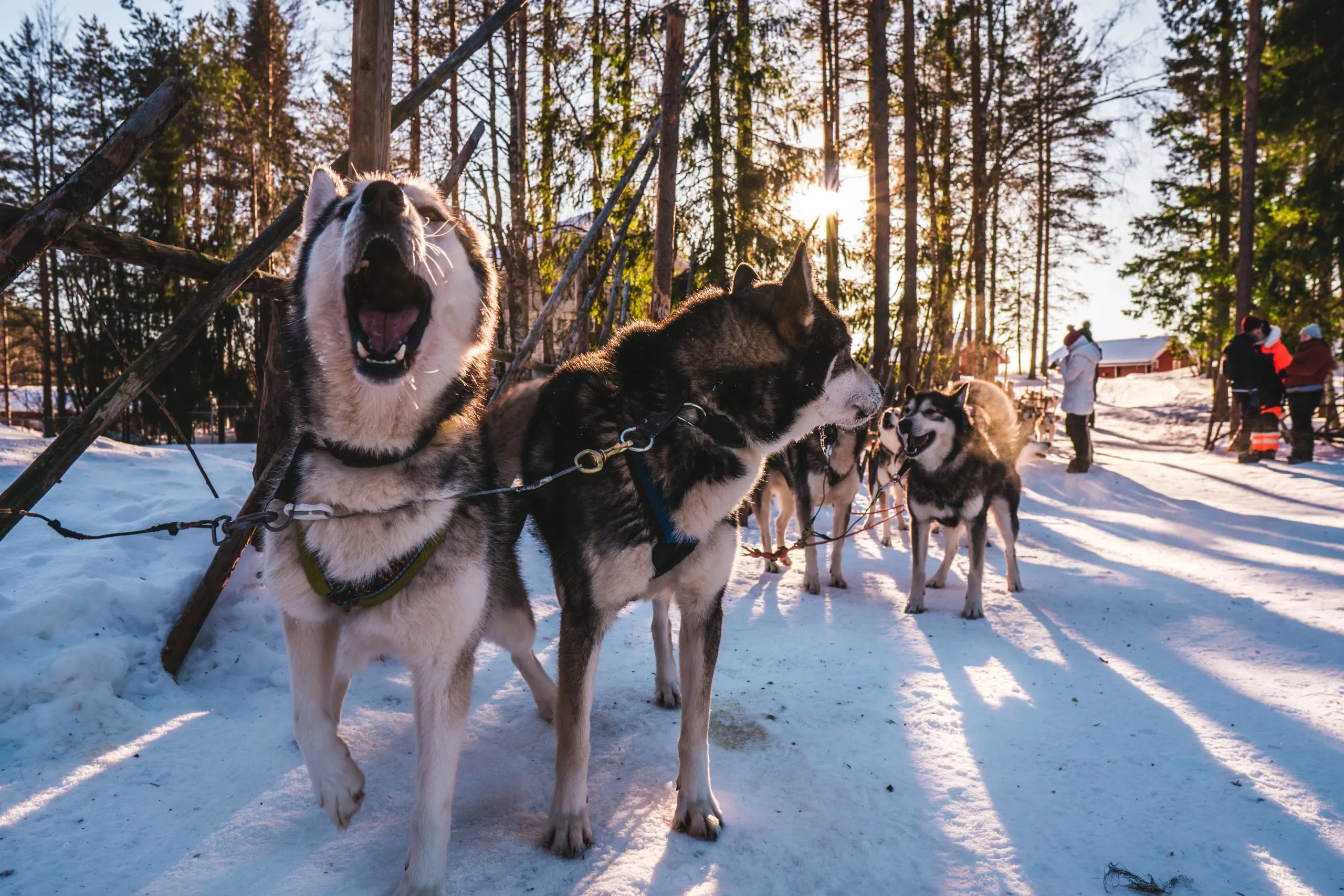Whether you agree or disagree, dogs are one of the most helpful and friendly animals in the world. This domesticated descendant of the wolf has earned its title to become man’s best friend, as the famous King Frederick quoted: “The only, absolute and best friend that a man has, in this selfish world, the only one that will not betray or deny him, is his dog.”
One fact about dogs is that it is one of the oldest animals and the first and only large carnivore species.
Dogs are also the most loyal animal to humans and one of the most intelligent animals in the world. Dogs have many uses like they are used as guards, and their incredible sense of smell can sniff any medical problems.
Husky is one of the loyal, helpful, and intelligent species of dogs. Generally speaking, Huskies have four main types or categories: Siberian, Agouti, Seppala, and Alaskan.
Although these types seem pretty similar, they all have many differences. So, let’s have a look at it.
Siberian Huskies are usually larger than the Alaskan Huskies, with a more variety of both coats and eyes. Siberian Huskies usually have longer coats than Alaskan Huskies. Siberian Huskies are show dogs and are better pets than other dogs. Talking about Seppala Huskies, they share their ancestral base with Siberian Husky and are a type of Husky. Whereas, the Agouti is only a color that occurs often in Seppala Husky.
These are just a few differences between types of Huskies. To know more about the facts and differences between Siberian, Agouti, Seppala, and Alaskan Huskies. Read till the end as I will be covering all.
What are the Siberian husky and its features?
Siberian huskies are a species of dog that originated from Siberia they are medium-sized working dogs and it belongs to a Spitz genetic family. They are described as thick furred double coats, special markings, and upright triangular ears.
They were bred by the Chukchi people who lived in Siberia for sled pulling and championship. They were first introduced to the world by a Russian fur trader, William Goosak, as sled dogs for the mining field, But nowadays, these dog species are mostly kept as a pet. They cost about 500 to 1200$ when purchased from a professional breeder.
Huskies originated as working sled dogs over thousands of years by the Chukchi people living in the Siberian peninsula of northeast Asia.
According to the Chukchi people, two Huskies guard the gates of heaven.
The Siberian became famous in 1925 after Siberian Husky sled dogs heroically and bravely brought lifesaving serum to defend against a diphtheria epidemic in Nome, Alaska.
In World War II, the US Army Used Siberian sled dogs to carry out Arctic search and rescue of downed pilots and cargo.
Siberian Huskies are high-energy and extremely athletic and can be professional escape artists.
The characteristics of a Siberian husky are:
| Characteristics | |
| Other names | Sibe and husky |
| Origin | Siberia |
| Height | Male: 21–23.5 inches (53–60 cm) Female: 20–22 inches (51–56 cm) |
| Weight | Male: 45–60 pounds (20–27 kg) Female: 35–50 pounds (16–23 kg) |
| Coat | Thick double coat |
| Color | Mostly, it has the color Black and pure white, including many different shades and markings. |
| Litter Size | 4-8 puppies |
| Life span | 12-14 years |
What makes Siberian Huskies unique?
Siberian huskies are a traditional northern breed.
They are brilliant but also obstinate and independent. They thrive in human companionship but require strong, compassionate training from the time they are puppies. These are dogs raised to run, and their need to run may sometimes outweigh their affection for their guardians.

What are Agouti huskies and their characteristics?
Agouti Husky is referred to a Husky with wild type coloring. Agouti Husky is also called Wolf sable, its each hair has several bands alternating in black and tan color.
Despite being a Siberian husky, they are much more expensive than a normal Siberian husky due to their attractive look and rareness. Agouti Husky has the same characteristics as a normal Siberian husky but has a wild-type coloring.
A pup of Agouti Husky will cost you around 1000$ to 3000$.

The gene for the color Agouti
Agouti is a gene that may be found in various species, including horses, mice, and dogs.
It controls the amount and distribution of melanin which is responsible for producing their black or darker color.
Different gene expressions can make a dog seem fawn or sable, like a German shepherd with tan tips or wild-type coloring.
Are Agouti Huskies an uncommon breed?

Yes, they are really rare. Show or conformation lineages are unlikely to produce an Agouti Husky. Contacting breeders of working or sled-dog racing lines is your best choice if you want to obtain an agouti Husky.
But note that you should also be careful if you want this breed.
You should never choose a dog simply based on its appearance, and this also applies to getting a Husky solely because of its eye color.
Huskies of various hues are high-energy worker dogs with a natural ability to sprint great distances. Most families seeking a pet and companion animal will not be a good fit for them. Do not get a Husky unless you have a lot of room and the capacity to let him run daily.
What are Seppala Huskies and their characteristics?
The Seppala Huskies and Siberian Huskies were considered the same breed with different colors, but today they have been considered as two separate breeds with a different appearances.
While Siberian Huskies are working dogs, Seppala huskies are considered working line dogs, selected in breeding programs to produce top-notch dogs.
They were mainly used for pulling a sled in cold countries. They are very rare as, unfortunately, there are no more active breeding programs for this species.
They have more height and are comparatively lighter than Siberian Huskies. Seppala Huskies have long erect ears, and their tail naturally sickle curves upon any danger.
They have identical characteristics to Siberian husky. The only difference between them is that they are working line dogs and have a life expectancy of 12-16 years.
Health issues reported
These breeds are required to do a lot of activity daily and will get restless if kept inside for an extended amount of time. They were designed to pull sleds, but these dogs will require a daily stroll or a brief run in today’s urban environment.
The owner should keep in mind that the breed cannot endure high temperatures, thus exercise on hot summer mornings is not advised.
Also these dogs need extreme care. They are also prone to the following health problems:
- Allergies
- Cancer
- Eye problems
What are Alaskan Husky and its characteristics?
Alaskan husky is a well-known species of husky, they are medium-sized-working sled dogs. Because of their performance, they are often and commonly used for competitive sled dog racing both in long-distance and short-distance races.
The characteristics of Alaskan huskies are:
| Characteristics | |
| Origin | United States |
| Breed status | Has been confirmed as a breed by any major kennel club |
| Height | 20-26 in (51-66 cm) |
| Weight | 35-75 Ib (16-34 kg) |
| Coat | Normally double coat |
| Color | Any pattern/color |
| Life span | ,10-15 years |
Are Siberian and Alaskan huskies the same?
Although Siberian huskies and Alaskan huskies are similar they are not the same.
The differences between these two huskies are represented below:
| Alaskan Husky | Siberian Husky |
| They are not purebred dogs | They are purebred dog |
| Longer coats are found in a variety of colors. | Shorter coat found in white or black |
| They are 40-55 pounds | They are 45-60 pounds |
| Longer coats are found in a variety of colors. | They are commonly brown, but in some cases, they are heterochromatic. |
| They are mainly bred for work | They are primarily bred for work and domestic life |
| Their origin is Alaska, United States | They are mainly blue, green, and brown, heterochromatic. |
| They can live up to 10-15 years | They can also live up to 10-15 years |
To know more differences related to these huskies, check out this video, which will go through all the differences between them in just 4 minutes.
What’s the difference between a Siberian, Agouti, and Seppala Huskies?
There are no such major differences between these huskies.
The only differences are that Siberian huskies are very common than Agouti and Seppala Huskies because Siberian huskies are mainly used for domestic activities while the others are used for work mainly, especially in sled racing.
Agouti Huskies are mostly found in working and sled dog lines, and they are not commonly seen in the show ring and are only seldom seen in conformation breeder litters.
Wrapping Up
- Dogs, often called man’s best friend, have a rich history and deep connection with humans. It showcases loyalty and intelligence.
- Huskies are loyal, intelligent, and helpful dogs among the diverse breeds. They have several distinct types: Siberian, Agouti, Seppala, and Alaskan.
- Siberian Huskies originate from Siberia. They’re known for their thick double coats, special markings, and upright triangular ears.
- Agouti Huskies, distinguished by their wild-type coloring, are rare. And are more expensive due to their unique appearance.
- Seppala Huskies share an ancestry with Siberian Huskies but are considered a separate breed. They are often used for sled pulling and are known for their erect ears and natural tail curves.
- Alaskan Huskies are specifically bred for sled dog racing. They exhibit various characteristics and are commonly used in competitive racing.
- This article highlights key differences between these Husky types. It relates to their size, coat, and origin.
- Proper care and understanding of the specific needs of Huskies, regardless of type, are essential. It is to ensure their well-being and happiness as loyal and helpful companions.
In summary, Huskies come in various types, each with unique characteristics. But all share the loyalty and helpfulness that make them beloved canine companions.
Other Articles
- What’s the Difference Between Tin Foil and Aluminum? (Explained)
- 60Hz Monitor vs. 144Hz Monitor for Gaming (Comparison)
- Tsundere vs Yandere vs Kuudere vs Dandere
- Difference Between Thy & Thine (Thou & Thee)
- What’s the Difference Between a Lease Termination Charge and a Reletting Charge? (Comparison)

